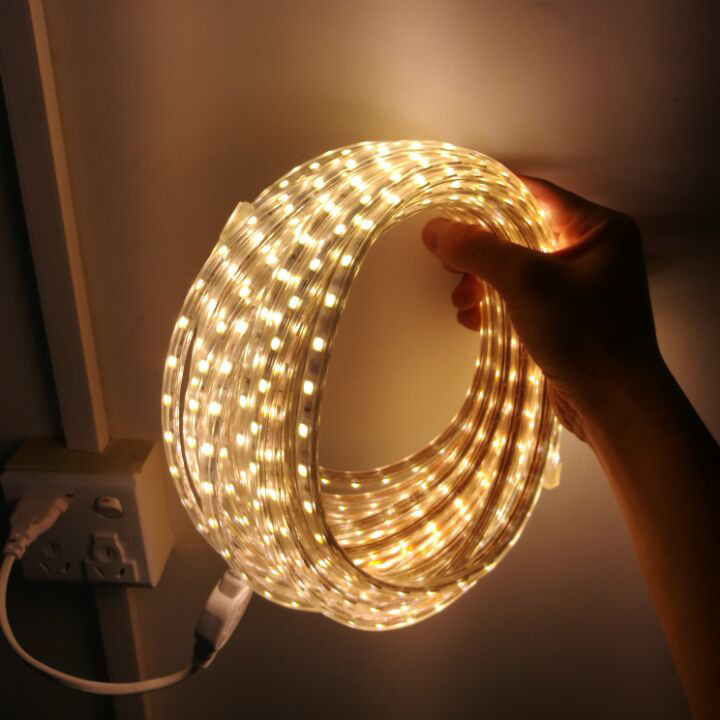Lighting is an essential element in modern life, serving a crucial role for both individuals and enterprises. Establishing an effective lighting system has become a pressing necessity for businesses in today's world.
An efficient lighting system should prioritize visual comfort while minimizing energy consumption. This ensures that the system not only saves electricity but also maintains user satisfaction, promotes economic efficiency, protects the environment, and ensures user safety.
Read more: Determine the Wiring
Inadequate lighting in the workplace can lead to eye strain, fatigue, and accidents, while excessive lighting can cause health issues such as headaches and stress. Both scenarios can result in tired eyes and reduced productivity. Therefore, it is imperative to build an effective lighting system that addresses these concerns.

To ensure visual comfort, several factors need to be considered when designing a lighting space:
Sufficient Brightness and Longevity
The lighting system should provide enough brightness to clearly see objects and obstacles without diminishing over time. This ensures that the workspace remains adequately illuminated for extended periods.
Read more: Gobos in lighting
Uniform Light Distribution and Glare Prevention
An effective lighting system should offer uniform light distribution without any significant glare. This eliminates any uncomfortable and distracting bright spots, providing a visually pleasing environment.
Appropriate Lighting Colors for a Pleasant Atmosphere
Choosing suitable lighting colors contributes to a pleasant and comfortable lighting space. The right color temperature can enhance productivity and create a welcoming ambiance.

Several factors must be considered to ensure visual comfort in the workplace.
The wasteful use of electricity significantly impacts monthly electricity expenses, particularly for enterprises. To assist users in managing energy efficiently and reducing costs, various lighting saving solutions are available
1. Utilize Natural Daylighting
Integrating daylight into the lighting system can lead to significant energy savings. Some energy-saving solutions involving daylight include:
- Innovative designs that eliminate daylight glare and effectively illuminate buildings, workshops, and warehouses.
- Incorporating skylights with Fibre-reinforced plastic (FRP) materials and transparent or translucent false ceilings to provide glare-free lighting. The suspended ceiling also helps reduce heat from natural light sources.
- Integrating atriums with FRP domes in architectural designs can eliminate the need for electric lights in high-rise building corridors.
- Utilizing natural light from windows, carefully designed to avoid glare. Light shelves can be employed to provide natural light without causing discomfort.

2. De-Lamping for Excess Lighting Reduction
Reducing the number of light bulbs can lead to significant energy savings. Some methods to achieve this include:
- Lowering the mounting height of lamps.
- Replacing existing lamp sets with more efficient alternatives while ensuring adequate lighting.
- Reducing lighting in non-working or unoccupied spaces.
- Implementing task lighting to provide focused illumination in specific areas, thereby reducing the need for general lighting fixtures. This approach saves energy and creates a visually appealing environment.
Read more: How to Update RV Interior Lighting
3. Timer, Twilight Switches, and Occupancy Sensors
Implementing automatic control systems to turn off unnecessary lights can yield substantial energy savings. Some options include:
- Twilight switches that adjust lighting based on daylight availability.
- Electronic dimmers suitable for dimming incandescent lamps. Fluorescent tube lights can also be dimmed if operated with electronic ballasts, using motorized autotransformers or electronic dimmers.

4. Lighting Maintenance
Over time, light levels decrease due to aging lamps and dirt accumulation on fixtures, lamps, and room surfaces. Proper maintenance can prevent these issues:
- Regularly cleaning fixtures, lamps, and lenses every 6 to 24 months.
- Replacing yellowed lenses.
- Cleaning or repainting small rooms annually and larger rooms every 2 to 3 years, as dirt accumulation decreases the amount of reflected light.
Read more: DMX Lighting Basics
5. Selection of High-Efficiency Lamps and Luminaries
LED technology has emerged as an energy-efficient lighting solution, offering high luminous efficacy, longer operating life, and lower production costs. LEDs are gradually replacing conventional lights, including high-pressure lamps in traffic lighting. Their advantages include:
- Higher illumination output compared to other lamps.
- Minimal heat generation.
- Free from toxic substances such as mercury, lead, cadmium, and harmful radiation.

In conclusion, implementing an efficient and economical lighting system allows for the reduction of electricity consumption, economic costs, and greenhouse gas emissions. Additionally, it lessens the burden on society and minimizes harmful effects on the environment. Successfully implementing energy-saving solutions requires not only design and technical considerations but also human consciousness. The support of policies plays a crucial role in driving enterprises towards a more economical and efficient use of energy.
Frequently Asked Questions (FAQs)
Q1. Why is visual comfort important in a lighting system?
A1. Visual comfort ensures that lighting conditions in the workspace are suitable for prolonged use. It prevents eye strain, fatigue, and accidents while promoting productivity.
Q2. How can natural daylight be integrated into a lighting system?
A2. Natural daylight can be incorporated by utilizing innovative designs, skylights with FRP materials, and well-designed windows. Light shelves can also be employed to provide natural light without causing glare.
Q3. How can excess lighting be reduced without compromising efficiency?
A3. The number of light bulbs can be reduced by lowering mounting heights, replacing lamps with more efficient alternatives, and implementing task lighting in specific areas. This approach provides focused illumination while saving energy.
Q4. What are some automatic control systems that can be implemented for energy savings?
A4. Twilight switches can automatically adjust lighting based on daylight availability. Electronic dimmers can be used to dim incandescent lamps or fluorescent tube lights operated with electronic ballasts.
Q5. Why is maintenance important for lighting systems?
A5. Regular maintenance ensures that light levels do not decrease over time due to aging lamps and dirt accumulation. Cleaning fixtures, lamps, and lenses and repainting rooms as needed help maintain optimal lighting conditions.
Follow for more: Lynn Delagarza


